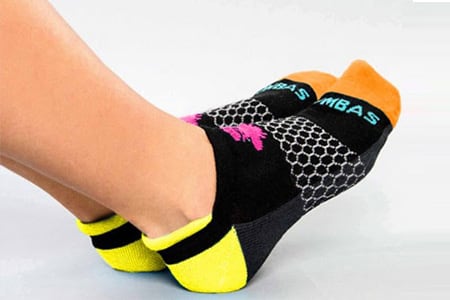Electronic door locks, such as this August Smart Lock, is part of the "new wave" of home security. The locks — which start at $199, according to the company's website — allows users to use their smartphones to lock and unlock their door, create virtual keys for guests and keep track of who comes and goes.
Electronic door locks, such as this August Smart...
Photo by Contributed Photo /Times Free Press.
Curtailing false alarms
Ever had those false alarms that go out to emergency personnel when an old-school landline-based alarm is tripped accidentally? Current security systems cut down on those false calls to law enforcement, says Capt. Carl Minden of the Pulaski County Sheriff's Office in Arkansas.
"The systems, on the whole, are better," he says. "When you have the ability to pull up images of your house on your phone and see whether there's something going on — yes, that does eliminate us ever getting the call," if there's not a problem.
"Let's say your alarm, you accidentally tripped it … If you've got the phone app, you can go ahead and reset it, whereas in the past, you had to go home, and sometimes people just wouldn't do it. The ability to fix a false alarm takes quite a few of those out [of the equation] for us now."
And if a burglary is committed in a home with cameras installed, "it helps to solve stuff, because you have footage."
Minden has had a security system in his home for many years. These days he, too, can operate it wirelessly. He admonishes homeowners to test their alarms periodically. He also advises consumers to make sure they set their alarms, even when they're home. He sets his alarm before going to bed for "even more peace of mind."
Do's, dont's of home security
Thinking of making your home safer via a security system? Daniel Jackson of Beyond Sound and Security in North Little Rock, Ark., offers these tips:
* Always do your research when choosing a security company.
"The one thing you want to do is just make sure first that you're dealing with someone who has a good work history." Find out how long that company has been in business and how much experience its installers have. "Jump on the internet, check their history, make sure they've kept their noses clean with the Better Business Bureau, things like that."
* When you get a new system, choose a user name and password you can remember.
"The one thing I've found is that [a customer will] get a new phone and then they can't remember their log-in information to get back into it."
* Familiarize yourself with your home's most burglary-vulnerable areas.
"Whenever you're looking at your own property, you always want to … look at it from a thief 's standpoint. [Ask yourself], 'If I were to break into this home, where would I go, how would I break into this home? Where can I not be seen?'" That's the first area you'd want to discuss with your security expert, he says.
* Inspect your house to determine how much protection you'll need.
"A lot of times that's not enough to secure a home. Most companies will go in and do a basic security system, three doors and a motion [detector]. When you're at home and the system is armed and in 'stay' mode, you're usually just relying on the three covered doors. If a thief breaks in through a window, then you don't have any protection."
And in a large home, say, 4,000 square feet, a homeowner on one side of the house may not hear a break-in on the other side. Have glass breaks — devices that pick up the vibration and sound of glass breaking — installed around the perimeter of the home.
* If your system or monitoring company alerts you of a break-in, don't try to be a hero.
"Some clients want to take their own action — go home, tie the bandana around the head, put the knife in the teeth and run in the house" to confront an intruder. "You just don't want someone to get hurt when the proper authorities are there to protect and serve."
Ken Meyer's job as an executive with a national technology company often takes him out of town, so he and his wife, Sheena, both rest easy knowing they have a high-tech security system at their East Ridge home.
"We have a hardwired security system and a very nifty and hardwired outdoor surveillance system with eight cams that we can access from our phones," he says. "We can also turn on various lights and open/close the garage door remotely. Yes, I am a geek."
While the techie side of him might have partially driven his desire for some of the gadgets, Meyer says he and his wife both use the system quite often.
"We use all of it in different ways," he says. "We both check the cams periodically. We put the alarm on when we are gone, and Sheena puts it on at night when I am traveling. We open the garage door to let the lady in who cleans our house. It's very utilitarian.
"We also get alerts when the garage door opens/closes or certain lights come on, so I know when Sheena gets home or leaves. Since she is home alone frequently, this is very helpful."
LOOK MOM, NO WIRES
Just like everything else, security systems have changed with the times — or rather with the technology. The number of households using landline telephones has dropped dramatically. According to December 2015 statistics from the Centers for Disease Control and Prevention, reported in the Arkansas Democrat-Gazette, 47.4 percent of homes had only mobile phone service for the first half of the year. With the smartphone becoming many people's personal control center and life-management device, it was inevitable that security systems would tap into that.
"Because of the mobile world we live in today, home security needs to be easy for consumers to manage while away from home," says Bruce Mungiguerra, senior vice president of operations for Dallas, Texas-based Monitronics, which produces home security systems. "There is a range of features for home security today — and the industry has changed more in the past few years than in the previous 20 years."
Rather than depending on hardwired technology protecting doors and windows, he says, consumers can manage their security systems "directly from their smartphone, tablet or computer, whether [they're] on a business trip or on the beach."
In the past decade, cameras have become the watchdogs and security guards for homeowners who want security that's proactive, says James G. "Tres" Lumpkin III, co-owner of Benton, Ark.-based Alert America/Southern Security and an ADT Alarm Systems dealer.
No matter what security company you're with, it's going to take 45 seconds to a minute before an alarm gets to the monitoring center "and for them to call you," Lumpkin says. "Now you've got another time period between that and them reaching the police And so you're out about two minutes Then, how long does it take the police to show up — five, 10, 15, 20 minutes? Sometimes never.
"You see the [house] that's got a camera and it's lit up what's a burglar going to do?" he asks.
Find another house.
Feeling secure
Shawn Whitfield is a local radio host with Clear Channel, and ADS Security Systems is one of his sponsors. They outfitted his East Brainerd home with "all of the bells and whistles" three years ago. He can control his entire security system from his phone.
With it, he can arm and disarm the system, lock and unlock his front door and his garage door, turn lights on and off, view what is happening through three cameras and communicate with the monitoring service via text and alerts. He has a key fob with a panic button that calls the police when pressed and he can control his heat and air conditioning.
"I do have a bit of overkill and would not have purchased all of it on my own, but I do use it all a couple of times a year," he says. "I can't tell you how many times I've left in a hurry and wondered if I remembered to close the garage door. With this I can check and close it if I need to."
North Chattanooga homeowner Brad Steiner likes being able to access the camera he has set up in his home to check on things, especially his two dogs. He says the Closeli system has options such as face recognition, but he has yet to engage it it.
He does worry, however, about how easily it might be hacked and also about remembering to turn it back on if someone from the cleaning service comes over.
"I do forget to turn it back on, and I turn it off out of respect," he says. "You can also set a timer, but I haven't done that either."
Corey Cochran, chief operations officer with Dependable Security Services in North Chattanooga, was able to access his home while he and his wife were on vacation in Florida and she sat up in bed around 3 a.m., wondering if they'd set the alarm.
"We had not, but then I started wondering if someone had already gotten in and taken everything," he says. "I was able to access the activity log and see that the last activity was us going out the front door."
Cochran says a lot of customers install wireless systems in part because they are easier to install, especially in pre-existing homes. Thanks to improvements in technology, wireless is just as effective and secure as hardwired systems, he says.
"Even the batteries, which might have needed replacing every three months, now last up to 10 years."
But to use the interactive features via an app on your phone, you must have a cellular-based system, he adds.
Going with wire
Joe Waddell, an insurance agent with Farm Bureau, put hardwired security systems in both the house he built in South Pittsburg and the apartment he built in North Chattanooga. The home system is more elaborate, with a monthly monitoring fee, backup battery and contacts on the doors and windows that trigger the system if breached.
"It gives me comfort like you wouldn't believe," he says.
The system in Chattanooga is as much designed to be a deterrent as anything else "since we don't keep anything in the apartment worth stealing. We aren't there for a week at a time or more sometimes," Waddell says.
He did a lot of research on the various systems and considered wireless, hardwired, cloud-based, monitored and unmonitored. Since the house was being built, he chose to hardwire the cameras. Also, the cameras are mounted 20 feet in the air and he didn't want to have to fool with changing batteries.
Like Meyer, he can check the security systems and see what is happening on the cameras with his phone.
But even with all the gadgets now out there, technology for smart-home systems is expected to advance further.
"We're going to see home security and automation change even more over the next few years, whether it's having more people remotely controlling air conditioning, lighting and door locks, or turning off that coffeepot that was accidentally left on," Mungiguerra predicts.
"Home security will become an even bigger and more personalized consumer experience."
Google's Home and Amazon's Echo similarly control many home gadgets such as music, security systems, heat and air thermostats and lighting, for example.
Helaine R. Williams of the Arkansas Democrat-Gazette contributed to this story.
Source:
Safe, secure and smartphone: Home security with all the bells, whistles, cameras and alarms
 We tried to make the phone prettier. We recommend letting a case do that.
We tried to make the phone prettier. We recommend letting a case do that.  Dolby Vision showreels looked very good on the screen. But access to real-world content is extremely limited at the time of going to press.
Dolby Vision showreels looked very good on the screen. But access to real-world content is extremely limited at the time of going to press. 
 Ahead of Galaxy S8, Galaxy S8+ launch, Samsung store catches…
Ahead of Galaxy S8, Galaxy S8+ launch, Samsung store catches…  Congress leader Deepender Singh Hooda demands new law on data…
Congress leader Deepender Singh Hooda demands new law on data…  Donald Trump is now your last hope for the most basic internet privacy rules
Donald Trump is now your last hope for the most basic internet privacy rules  iOS 10.3 is freeing up extra storage space, users say
iOS 10.3 is freeing up extra storage space, users say  This tiny iOS change will make your iPhone even zippier
This tiny iOS change will make your iPhone even zippier  Amazon's Kindle is currently a bargain for Prime members
Amazon's Kindle is currently a bargain for Prime members  सैमसंग गैलेक्सी S8 के लॉन्च से कुछ समय पहले ही सैमसंग के एक स्टोर में लगी आग
सैमसंग गैलेक्सी S8 के लॉन्च से कुछ समय पहले ही सैमसंग के एक स्टोर में लगी आग  पैनासोनिक ने नया कैमरा लॉन्च किया
पैनासोनिक ने नया कैमरा लॉन्च किया  एप्पल iPhone 8 हो सकता है नए 3डी सेंसिंग कैमरा से लैस
एप्पल iPhone 8 हो सकता है नए 3डी सेंसिंग कैमरा से लैस  आज लॉन्च होने जा रहा है सैमसंग का नया फ्लैगशिप स्मार्टफ़ोन सैमसंग गैलेक्सी S8, रुक नहीं रहा है इससे जुड़ी अफवाहों का सिलसिला
आज लॉन्च होने जा रहा है सैमसंग का नया फ्लैगशिप स्मार्टफ़ोन सैमसंग गैलेक्सी S8, रुक नहीं रहा है इससे जुड़ी अफवाहों का सिलसिला  डुअल कैमरा सेटअप के साथ आज लॉन्च होगा माइक्रोमैक्स Dual 5 स्मार्टफोन, जानें कैसे देखें लाइव स्ट्रीम
डुअल कैमरा सेटअप के साथ आज लॉन्च होगा माइक्रोमैक्स Dual 5 स्मार्टफोन, जानें कैसे देखें लाइव स्ट्रीम  Apple officially releases iOS 10.3 update
Apple officially releases iOS 10.3 update Apple OEM partner Wistron gets BIS certification for iPhone SE production in India
Apple OEM partner Wistron gets BIS certification for iPhone SE production in India Future Apple Watch bands could show notifications, send alerts
Future Apple Watch bands could show notifications, send alerts Apple iOS 10.3, WatchOS 3.2, MacOS 10.12.4 released: Here are the top 9 features
Apple iOS 10.3, WatchOS 3.2, MacOS 10.12.4 released: Here are the top 9 features Apple opens three new stores in the US, Germany, China
Apple opens three new stores in the US, Germany, China
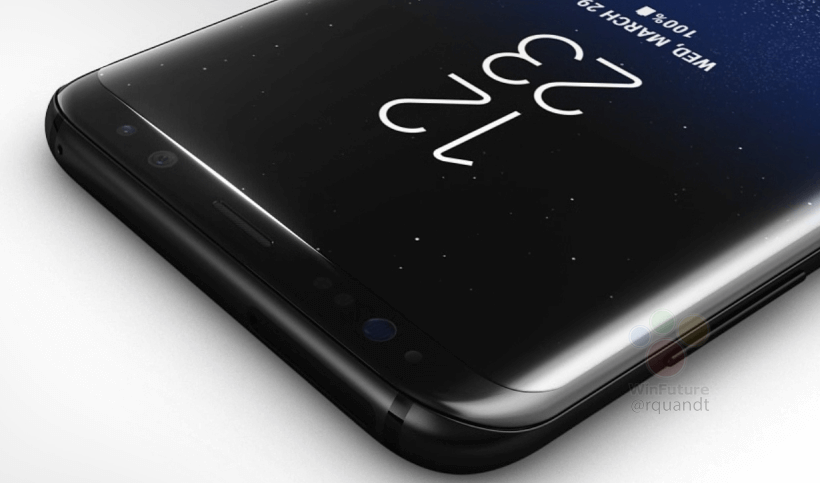

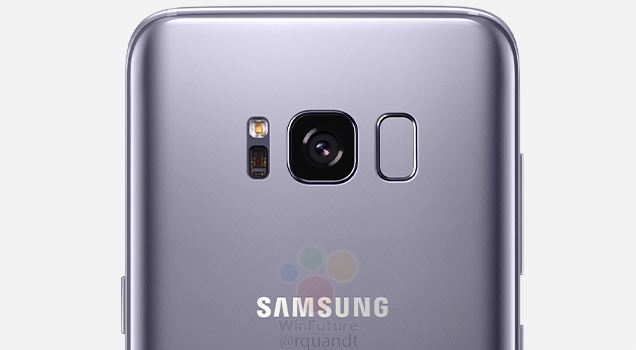
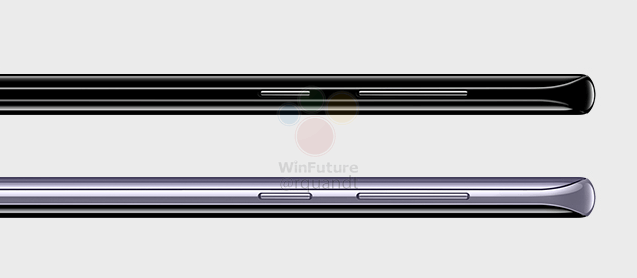
 As the product expands the phone camera opportunity to get impressive pictures and videos
As the product expands the phone camera opportunity to get impressive pictures and videos 
![How to quickly open camera on Moto G5 Plus [Guide]](https://www.mobigyaan.com/wp-content/uploads/2017/03/Moto-G5-Plus-Hands-on-and-First-Look-Images-4-e1489839159458.jpg)
![How to quickly open camera on Moto G5 Plus [Guide] How to quickly open camera on Moto G5 Plus [Guide]](https://www.mobigyaan.com/wp-content/uploads/2017/03/How-to-quickly-open-camera-on-Moto-G5-Plus-Guide-3.jpg)
![How to quickly open camera on Moto G5 Plus [Guide] How to quickly open camera on Moto G5 Plus [Guide] How to quickly open camera on Moto G5 Plus [Guide]](https://www.mobigyaan.com/wp-content/uploads/2017/03/How-to-quickly-open-camera-on-Moto-G5-Plus-Guide-2.jpg)
![How to quickly open camera on Moto G5 Plus [Guide] How to quickly open camera on Moto G5 Plus [Guide] How to quickly open camera on Moto G5 Plus [Guide] How to quickly open camera on Moto G5 Plus [Guide]](https://www.mobigyaan.com/wp-content/uploads/2017/03/How-to-quickly-open-camera-on-Moto-G5-Plus-Guide-1.jpg)
 'Dog Whisperer' Faces Cruelty Probe
'Dog Whisperer' Faces Cruelty Probe  Take the World Geography Quiz! How Much Do You Know?
Take the World Geography Quiz! How Much Do You Know? 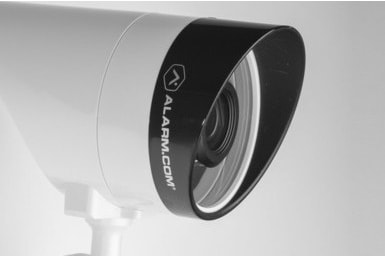 How Secure Is That Security Camera
How Secure Is That Security Camera  You'll Be Surprised How Gorgeous These 10 'Homely' TV Actr..
You'll Be Surprised How Gorgeous These 10 'Homely' TV Actr..  Her Dress Dropped Jaws At The 2015 Met Gala
Her Dress Dropped Jaws At The 2015 Met Gala  6 iPhone 6S & 6S Plus alternatives available
6 iPhone 6S & 6S Plus alternatives available  Asus Transformer Book T300 Chi - Techradar India
Asus Transformer Book T300 Chi - Techradar India  Idea: Latest News related to Idea- Techradar India
Idea: Latest News related to Idea- Techradar India  mobile phones Reviews and News - Techradar India
mobile phones Reviews and News - Techradar India  13-inch Apple MacBook Pro - Techradar India
13-inch Apple MacBook Pro - Techradar India 



